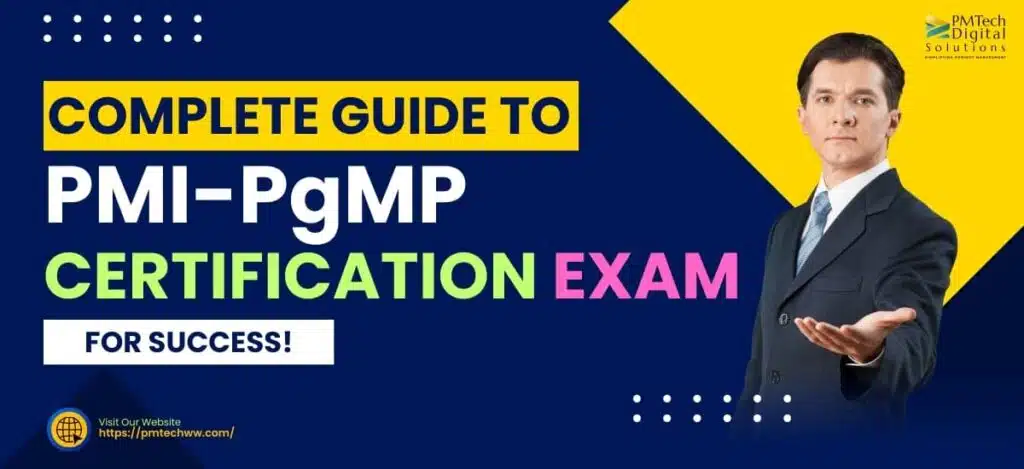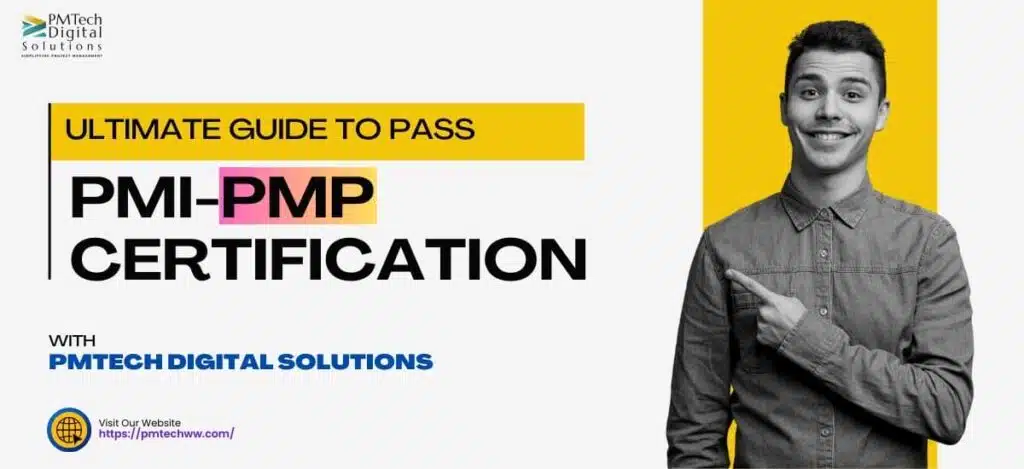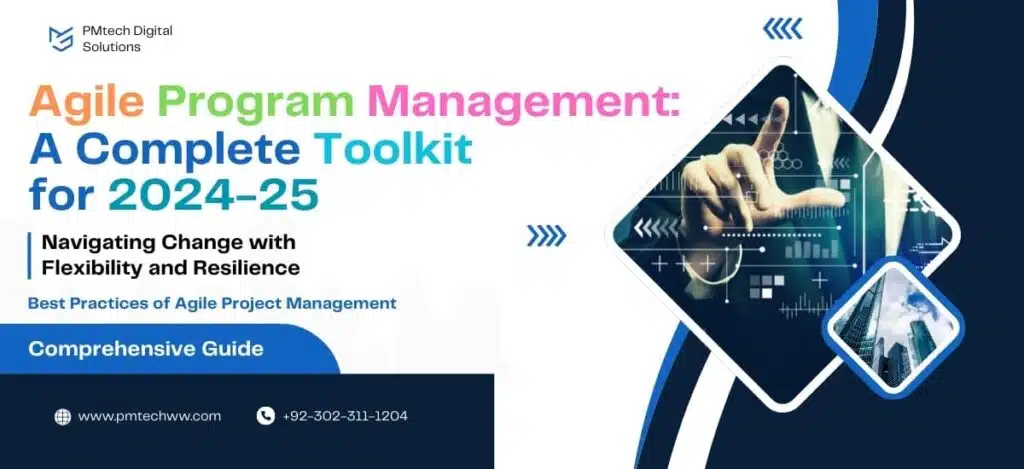PMI PgMP: A Complete Guide To Program Management Mastery!

Reading Time: 14 minutes Boost your career with a PMI PgMP certification! Learn how this globally recognized credential can enhance your program management expertise and open new doors.
PMI PMP Certification: Your Ultimate Guide to Pass in 2024

Reading Time: 12 minutes Boost your career with PMI PMP certification! Learn how to ace the exam & become a project management pro. Discover tips, resources in this comprehensive guide.
Agile Program Management: A Complete Toolkit For 2024!

Reading Time: 17 minutes Agile Program Management applies Agile principles to manage programs flexibly and adapt quickly to changes. It contrasts with traditional project management by constantly aligning with evolving needs and delivering continuous value. This article will explain the essentials, key components, and benefits of agile program management, helping you implement agile program management and enhance your project outcomes effectively. Key Takeaways Agile Program Management integrates Agile principles into program management, prioritizing customer value and adaptability over rigid processes. Key components for success include Iterative Planning, Stakeholder Engagement, and Continuous Feedback Loops which ensure alignment with evolving project goals. Implementing Agile requires a structured approach including team training, iterative adjustments, and alignment with organizational objectives for optimal outcomes. Ensuring that project teams are well-coordinated and their data stays synchronized is crucial for achieving these goals. Understanding Agile Program Management Program management infused with agile principles—called Agile Program Management—is a strategic methodology that incorporates the agility of agile practices within the wider scope of program management. Contrasting traditional project management, which typically focuses on strict adherence to predetermined deliverables and timelines, Agile Program Management is crafted for flexibility and adaptability, allowing rapid adjustments in response to evolving project requirements and shifting stakeholder expectations. This adaptable nature is imperative in our current fast-paced business landscape, where the swift implementation of an agile program can be pivotal for a project’s triumph or downfall. Agile Program Management places significant emphasis on maximizing customer value above all other objectives. This orientation towards customer satisfaction means prioritizing responsiveness over mere process efficiency and dependability. By engaging stakeholders consistently and refining product iterations continually, agile teams remain attuned to what is most pressing for both businesses and their clients at any given moment. For successful execution within this paradigm shift from conventional methods toward Agile Program Management, it requires an effective governance architecture. Such framework must facilitate informed decision-making while supporting early frequent delivery—a signature characteristic of Agile methodologies—which enables teams to better fulfill client demands while mitigating late development phase risks significantly. In essence, measuring success when employing an Agile approach hinges on how well teams can anticipate client needs and provide functional solutions expediently, rendering it exceptionally suited for navigating today’s rapidly changing marketplace conditions. Key Components of Agile Program Management To consistently deliver value, Agile Program Management relies on essential elements that must work together seamlessly. These elements are iterative planning, stakeholder engagement, and continuous feedback loops. To fully leverage Agile methodologies, organizations need to comprehend and implement these crucial components. Comprising individuals from different functional areas working in unison to increase responsiveness and accelerate delivery, agile teams form the backbone of this approach. The importance of their cross-functional nature cannot be overstated as it allows for a comprehensive response to the varied challenges encountered during project execution. An excellent manifestation of such teamwork is seen within an Agile Release Train (ART), where numerous agile teams align their efforts towards shared goals. Organizations Benefit from adopting the Scaled Agile Framework (SAFe), which effectively organizes and coordinates interrelated projects among various agile teams ensuring synchronized progression throughout the program. These aspects will each receive detailed consideration – discussing how iterative planning facilitates adaptability, ways in which Stakeholder Engagement ensures alignment with user needs, and why Continuous Feedback Loops are pivotal for maintaining relevance – all fundamental for upholding effectiveness within Agile Program Management aligned with overarching organizational objectives. Iterative Planning Program management within Agile teams is predicated on the iterative approach, enabling them to adjust swiftly and stay in tune with shifting program goals. This method stands in contrast to conventional program management strategies that tend to follow a set sequence of actions. Agile instead advocates for regular iterations that support ongoing refinement and adaptation. Such adaptability ensures continued relevance and efficiency amidst dynamic conditions. In order to maintain effective responsiveness to changing needs, agile teams align their planning efforts every 8-12 weeks through synchronization activities. By doing so, they guarantee consistency among team members’ understanding of objectives and direction. More than simply reacting to change, iterative planning continuously realigns project initiatives with overarching program goals. It’s an essential practice for keeping the venture aligned with its intended path while delivering outcomes that meet expectations. Stakeholder Engagement Stakeholder Engagement is a vital aspect of Agile Program Management, wherein consistent interaction with stakeholders allows their insights to be integrated at all stages of the project’s duration. This process secures a more precise convergence with stakeholder anticipations and requirements, affirming that the outcomes produced remain pertinent and beneficial. To guarantee potent Stakeholder Engagement within an agile framework, frequent exchanges and teamwork are imperative. These practices serve to synchronize the objectives of the project with what stakeholders envision. Through fostering an environment steeped in cooperation, Agile teams have the capability to modify their course according to feedback from stakeholders – this not only boosts contentment but also drives towards triumphant realization of projects. Continuous Feedback Loops In Agile Program Management, the implementation of Continuous Feedback Loops is crucial as they facilitate immediate enhancements and modifications during the program’s lifecycle. Regular retrospectives and review meetings are common practices where teams can swiftly recognize challenges and resolve them. Such mechanisms for ongoing feedback guarantee that targets stay in sync with shifting business objectives, thereby enhancing organizational value significantly. The iterative nature inherent to this feedback process enables teams to perpetually polish their methodologies, leading to an elevation in their general efficacy. Roles and Responsibilities in Agile Program Management In Agile Program Management, a thorough grasp of the distinct roles and responsibilities is crucial for addressing all aspects of project execution effectively. The role of the Agile Program Management Office (PMO) is to synchronize individual projects with broader program objectives while tackling organizational challenges and providing necessary tools and insights for keeping projects in line with the needs of the program. Crucial positions within Agile Program Management include those of the Program Manager, Product Manager, and Release Train Engineer. These individuals play pivotal roles in guaranteeing that value delivery stays consistent with strategic
Construction Program Management: A Complete Toolkit For Success!

Reading Time: 20 minutes Master construction program management & deliver projects on time and within budget. Learn best practices and tools to optimize your construction programs.
